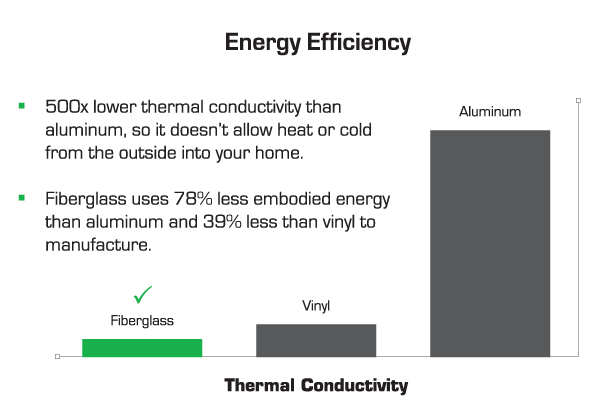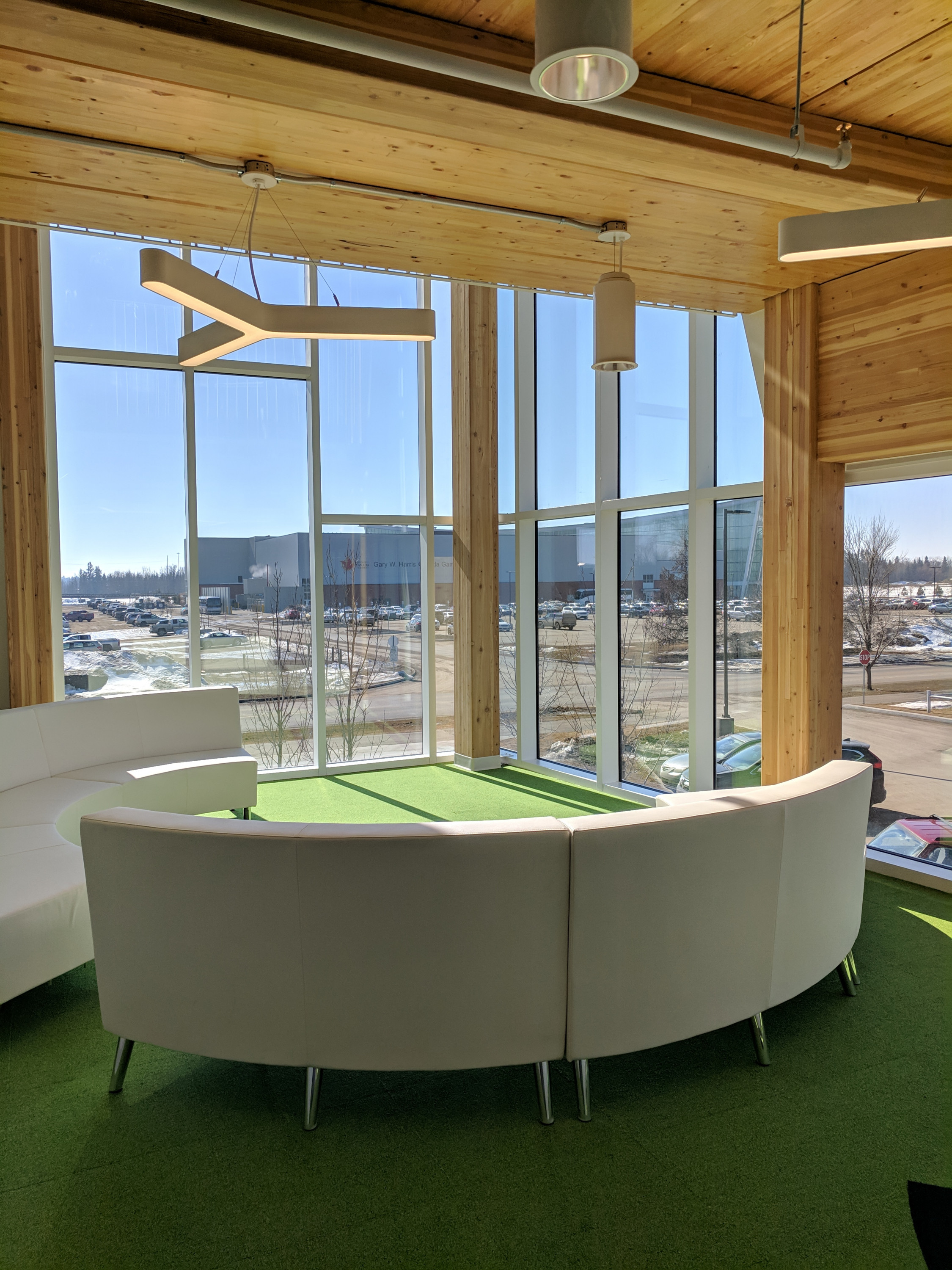Curtain Wall

Energy Efficiency
Energy efficient frames have low conductivity that discourages the transfer of cold into a building. Fiberglass has a much lower conductivity than metal options; specifically, 500 times less conductive than aluminum.
Eco-Friendly
Due to its energy performance and longevity, fiberglass is often selected for Net Zero and LEED projects.
Greener Building with Composite
With an industry-wide focus on budgets and operating costs, not to mention more stringent building codes and LEED rating on the horizon, building with conventional aluminum curtain wall can be a hard choice to justify.
Compared to a conventional Kawneer 7500 aluminum system, GlasCurtain fiberglass system achieves:
- Tactile warmth
- 5-10% energy savings.
- Similar cost to aluminum framing
- 35% less thermal bridging.
- Reduced expansion and contraction.
- Excellent strength with further reinforcing available.
- More LEED v4 points.
- 40% less embodied energy as per Athena Sustainable Materials Institute LCA.
- 60% less GHGs, meeting the Architecture 2030 Challenge.
Studies have shown a strong preference for the fiberglass over the aluminum. Across each indicator measured, fiberglass profiles demonstrate a lower cradle-to-grate environmental impact. Fiberglass results are between 40% to 90% of aluminum environmental burden results.

While manufacturer’s try to off-set this impact by pointing to end of life recycling, in a typical building demolition, a lot of this material ends up in a landfill anyhow.
Fiberglass framing offers a far more environmentally friendly build than aluminum, with comparable strength, longevity and a much lower thermal conductivity.
